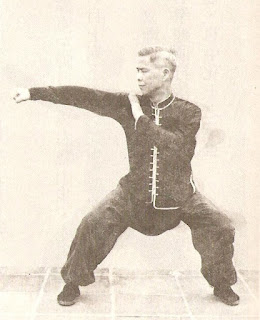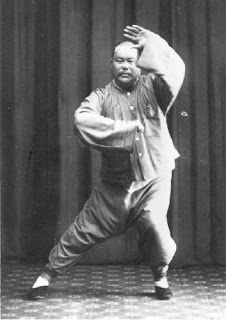by Phillip Starr
The key to any given martial art isn't so much in the technique; the real secret(s) lie in the proper body structure. This is one of the reasons I wrote MARTIAL MECHANICS. But I later wrote a sequel to it that delves deeper into the subject (MARTIAL STRUCTURE).
There's much more to martial art than simply standing in a certain manner and executing a particular technique. Much. More. Body structure is what gives the technique real power. There's no need for what I call “oomph strength” in a given technique. Just precision and correct structure. If those two things are added to the mix, the technique suddenly becomes enormously powerful and devastating with minimal physical effort.
Proper structure is one of the main reasons for the regular practice of zhan-zhuang (stake standing). Many practitioners of Chinese martial arts believe that the main reason for their use (mainly in the internal arts) is for the cultivation of qi but I believe they are mistaken; the main reason for their regular practice is to teach correct structure and alignment (which will naturally lend itself – once it is thoroughly learned – to the cultivation of intrinsic energy).
Internal martial forms such as taijiquan, baguazhang, and xingyiquan, are all about proper structure. It's one thing to get it when you're standing in a static posture (and even that takes some time!), but it's quite another to maintain proper structure when you move...hence, the reason taiji is practiced mostly in slow motion and why all three of the neijia emphasize the importance of “holding” certain postures.
The study of
proper body structure must necessarily involve more than an
understanding of the various laws of physics. It must also involve a
good understanding of kinesiology (how the human body works).
Sometimes the two seem to be at odds with each other and in those
cases, kinesiology wins out.
For instance, physics will tell us that the greater the size of the base (your stance) relative to the height of the object (how tall you are), the more stable it is. But this isn't necessarily true when we're dealing with a human body. According to strict physical laws, your horse-riding stance should be very stable if you widen your base by spreading your feet as far apart as possible...and we all know how that's going to work out! So we must figure in the principles of kinesiology...
Did all of the martial arts masters of times past know about this? I don't think so. Many clearly did, as seen by the emphasis placed on structure in the methods that have been passed down to us. However, quite a number didn't know about this as evidenced by the same thing. Many of these principles were regarded as secret and not taught openly and/or were taught only to trusted worthies. So the secrets remained secret and are still secret (for the most part) to this day.
One highly respected Japanese master, sensei Akira Hino, “re-discovered” many of these principles by studying ancient texts and training as they directed him. He began training in Goju-ryu karate and had been told that the kata of Sanchin was really the heart of that art. He would practice this kata for several hours every day and eventually realized that its value lay in what it teaches in terms of structure. Sensei Hino began carefully studying and analyzing ancient texts on the various ancient arts. He subsequently developed a special method of training that focuses on correct structure and currently teaches in Japan and offers seminars worldwide.
So the secrets remain safely obscure to this day...unless you know where and how to look and you have the willingness to cast aside your pride and be as a blank slate.

























No comments:
Post a Comment